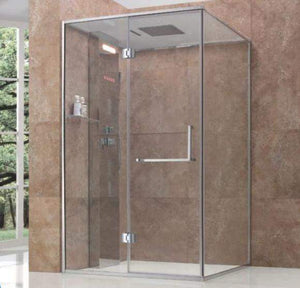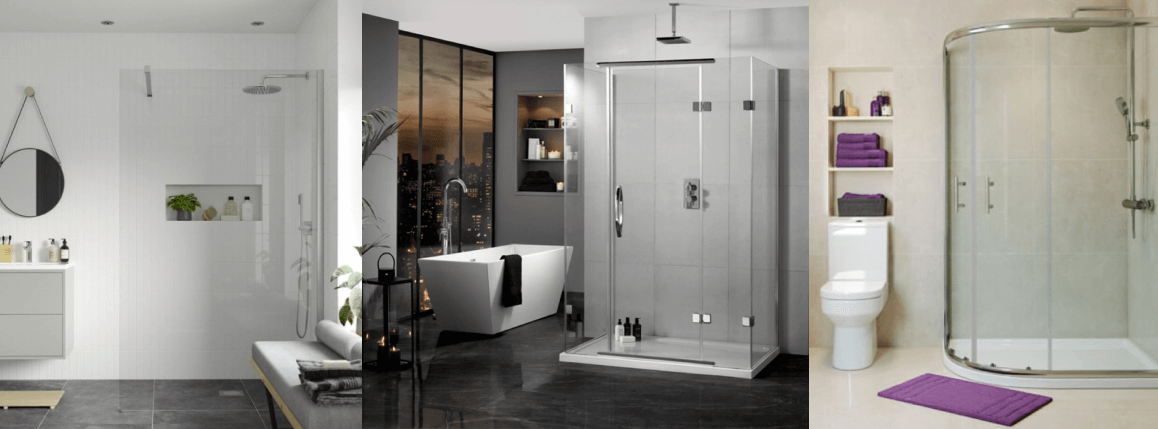Each person has their unique opinion on the subject of How to Build a Shower Enclosure for Your DIY Bathroom.

A successful shower installment calls for cautious preparation as well as a great deal of job. For the most part, you will need to do 3 kinds of jobs: framing walls, mounting the plumbing, and ending up walls.
Prep work
Firstly, you need to pick the type of shower that you want to mount. It is important to establish whether the picked shower is capable of coping with specific systems and also can regulate a risk-free level of water with the central heating boiler. Most shower systems nowadays are created to be flexible to different water pressures (such as stored hot water and also cool keys).
It is additionally vital to consider the water pressure and the planning of the piping and also water drainage for the shower
Different Types of Shower Units
Technique
Relying on the type of shower you want to mount, the shower head should either be fitted in order to prevent its contact with the water in the bathroom listed below or the base tray, or it has to have a check valve.
Before starting, it is a good idea to note the placements of the shower head and also control, and to plan the pipe-work included. In addition, the drain system to remove the waste water will certainly need to be intended. Both settings of the cable route and also the shower switch will certainly additionally need to be taken into consideration if an instantaneous or electric shower device is being set up.
Make use of the instruction guide offered with the shower system to fit the shower control.Before suitable the pipelines that will provide the water to the shower system, it is important to cut off the water system. In order to shield the pipelines, they need to be offered a water-proof covering as well as additionally fitted with separating shutoffs. The pipes can after that be hidden right into the wall surface and plastered over to neaten the general appearance.
Fit the base tray, shower head, and fittings.
Connect the primary shower control to the pipelines that will be supplying the water (This might require a female screw string adapter).
Reconnect the water supply as well as test the pipes for any type of leakages, as some might need tightening up.
If you are mounting an electric shower, remember to switch off the power supply prior to making any type of electrical links. When these links have actually been made (there need to be advice within the instruction manual), the power supply can be switched back on.
Adjusting Water Pressure to Fit Your Shower
The cold water tank can be lifted to a greater elevation (occasionally as little as 150mm (6inches)) by installation a solid wooden support underneath it - perhaps composed of struts and also blockboards. If you select this alternative, the major as well as circulation pipes will certainly additionally have to be increased to satisfy the brand-new height of the tank.
Conversely, a booster pump (a single pump or a dual/twin pump) can be fitted. Whichever type is selected, it has to be connected into the power supply in order to operate.
Piping and also Drainage
It is best to use 15mm diameter supply pipes, as well as make the go to the shower as brief and also straight as feasible so as to maintain maximum pressure and reduce warmth loss. Additionally, by reducing using joints for pipeline edges, you can decrease the resistance in the circulation of the water supply. You can accomplish this by flexing the pipelines instead.
Many Typical Blunders
How Do You Install a Shower? Follow This Guide
Installing a Shower at a Glance
Tools & Materials: Level, electric drill, caulk, hole saw, cedar shims, shower unit Step 1: Drill pilot holes Step 2: Prep fixture holes Step 3: Move unit into place Step 4: Caulk corners and base Step 5: Attach door Step 6: Install shower pan Whenever plumbing is involved in a DIY project, people worry about what might go wrong. The truth is that installing a shower isn’t that complicated, and you can save a lot of money by doing it yourself. You shouldn’t need to make any alterations to your plumbing to complete the job, and most of the tools you need will be provided in your new shower kit.
Can I Install a Shower Myself?
Even if you’ve never installed a shower before, you’ll find this to be a project that is perfectly suited for DIYers with a moderate level of experience. Whether you're doing a bathtub conversion or installing a new stall, most of what you need comes in shower kits that you can purchase from a hardware store. The first thing you need to do is determine what type of shower stall you want.
Single-panel stalls are the easiest to install because they come preassembled. All you need to do is put them in place. Multi-panel showers require a few additional steps, but you’ve got more control over the appearance of your unit. Multi-panel units are also much easier to handle if you’re going to do the installation without any help.
Be sure to take all appropriate safety precautions, such as wearing eye protection and gloves. When you’re removing or installing a shower unit, you might kick up debris that could hurt your eyes. You’ll also need to work with equipment that will get extremely hot, so be sure to have safety gloves handy.
Tools and Materials
2- to 4-foot level Electric drill with a 1/8-inch drill bit Caulk 2-inch hole saw Cedar shims The unit itself Before You Begin: Prep the Space
It’s highly important to measure your space accurately before putting the stall in. Measuring from the floor upward and from each corner outward will ensure you’ve got the right measurements. What you’re looking for is where the plumbing apparatuses are going to come through the stall. Transfer these measurements over to the back of your unit by drawing the locations of these holes using a pencil or marker.
Pull out your old shower and make sure to scrape off all the old caulking. Be thorough because you want to work with smooth surfaces for the best installation. Once you’ve pulled out your existing shower, you need to make sure that the floor is clean and dry. The best way to clean debris is with a shop vacuum, as it’ll soak up water and dirt together.
If you’re experiencing any plumbing issues, such as low water pressure, this is a perfect opportunity to solve them. Make sure that the pipes themselves are not in need of patching and clean your showerhead. When you turn the water back on after your project, check the pipes for signs of wear or disrepair. Anything beyond minor repairs should be handled by a plumber, and this is the best time to bring in a professional.
If the floor has any moisture at all, don’t proceed until it’s completely dry. The last thing you need is for the floor to rot or invite mold and mildew into your base. Once everything is dry, apply waterproof wallboard to the walls. This can be attached with screws or nails, then sealed with caulk so that water doesn’t seep into any crevices.

Do you really like reading about How to Install a Direct-to-Stud Shower Enclosure? Leave feedback below. We will be glad to listen to your thoughts about this posting. We hope that you visit us again soon. Are you aware of anybody else who is excited about the niche? Feel free to promote it. Thank-you for taking the time to read it.
Check Us Out